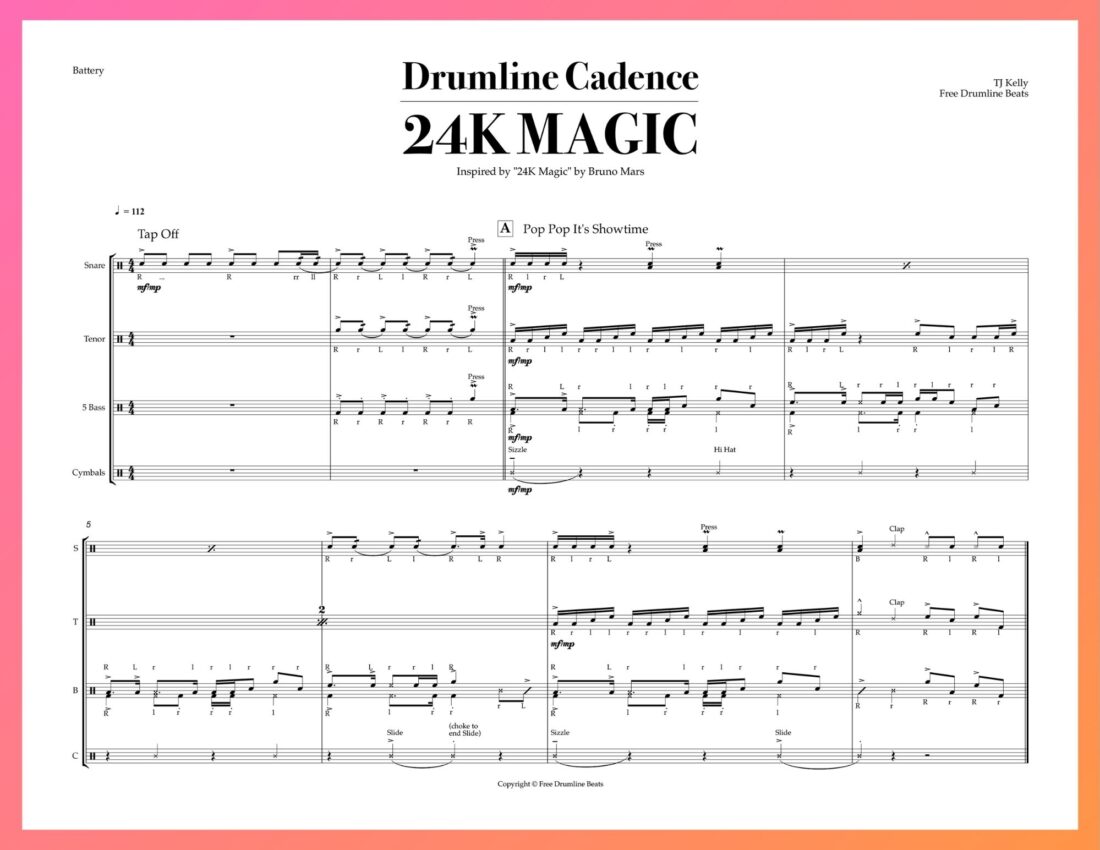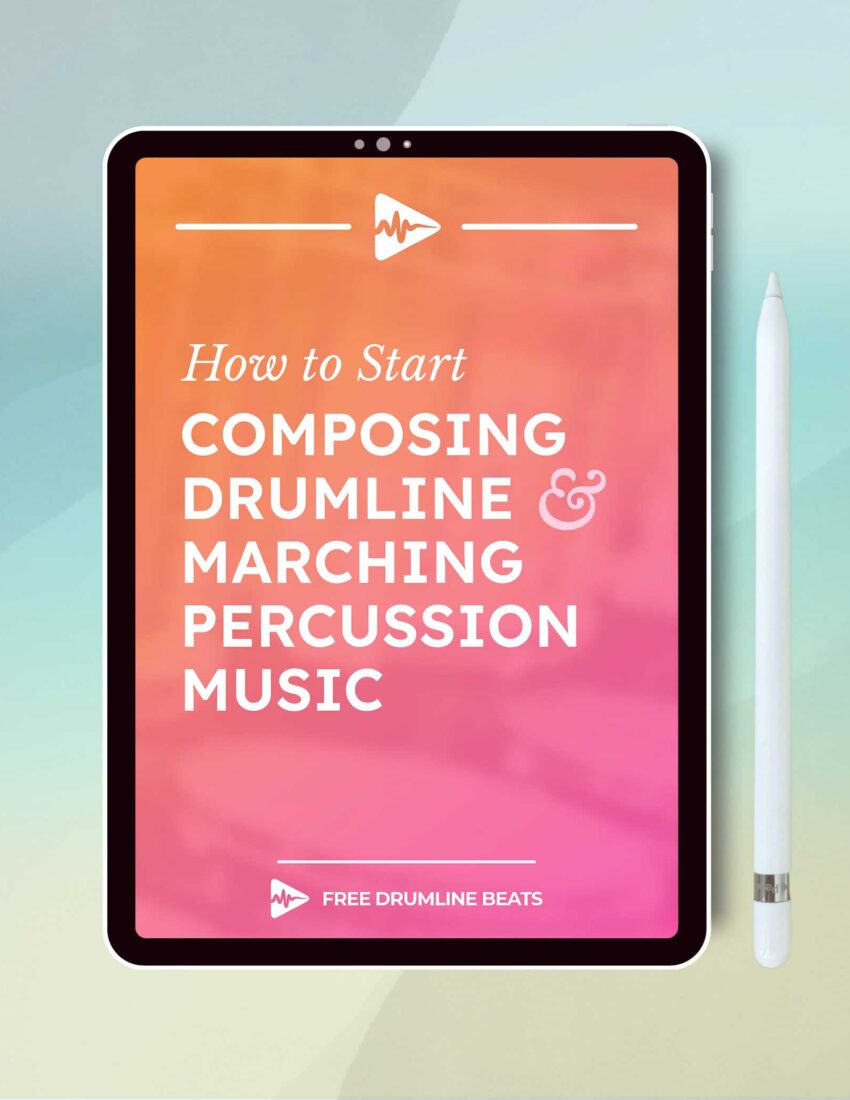Tempo
Set at a comfortable 112 BPM, the tempo sits in a grooveable pocket. While steady, the layering and subdivisions demand accuracy and feel—not raw speed.
Rudiments
Advanced rudiments are used musically across all voices. Snare and tenor parts include 5-, 6-, and 9-stroke rolls, hertas, and paradiddles. Execution is demanding but rewarding.
Stickings
Stickings are critical throughout, especially for tenor putada figures (RLL RLL RLL), bass “4’s,” and syncopated snare phrases. Some phrases require precise interpretation and alternating patterns.
Rhythm / Syncopation
Syncopation is a core feature—especially in cymbals and inner voice layering. Rhythms are often backloaded or “on the ands,” requiring feel, patience, and control across the ensemble.
Snare Complexity
Snare parts involve advanced roll work, accents, backsticking, and groove shaping. While not blisteringly fast, the coordination and musicality push advanced players to play with intent and consistency.
Tenor Complexity
The tenors function as both groove drivers and melodic interpreters. Frequent motion across drums, syncopated rhythms, and crossover stickings require dexterity and clear spatial awareness.
Bass Complexity
Features voice layering with melodic motion in upper drums and rhythmic pulse in lower voices. “4’s” (alternating 32nd notes) and multi-line moments test independence and ensemble awareness.
Cymbal Complexity
Includes slides, sizzles, hi-hat chokes, and accented crashes—often placed on off-beats or layered against ensemble motion. Players need strong timing and feel but no complex notation.
Ensemble Coordination
This cadence thrives on layered groove and voice interplay. Tenors, basses, and cymbals pass phrases and back up each other rhythmically. Tight ensemble awareness is key for clarity and crowd impact.
Endurance
Moderate length with frequent rotation of featured sections. While intense in bursts, the cadence balances demand with pacing. Physically and mentally engaging but not exhausting.















